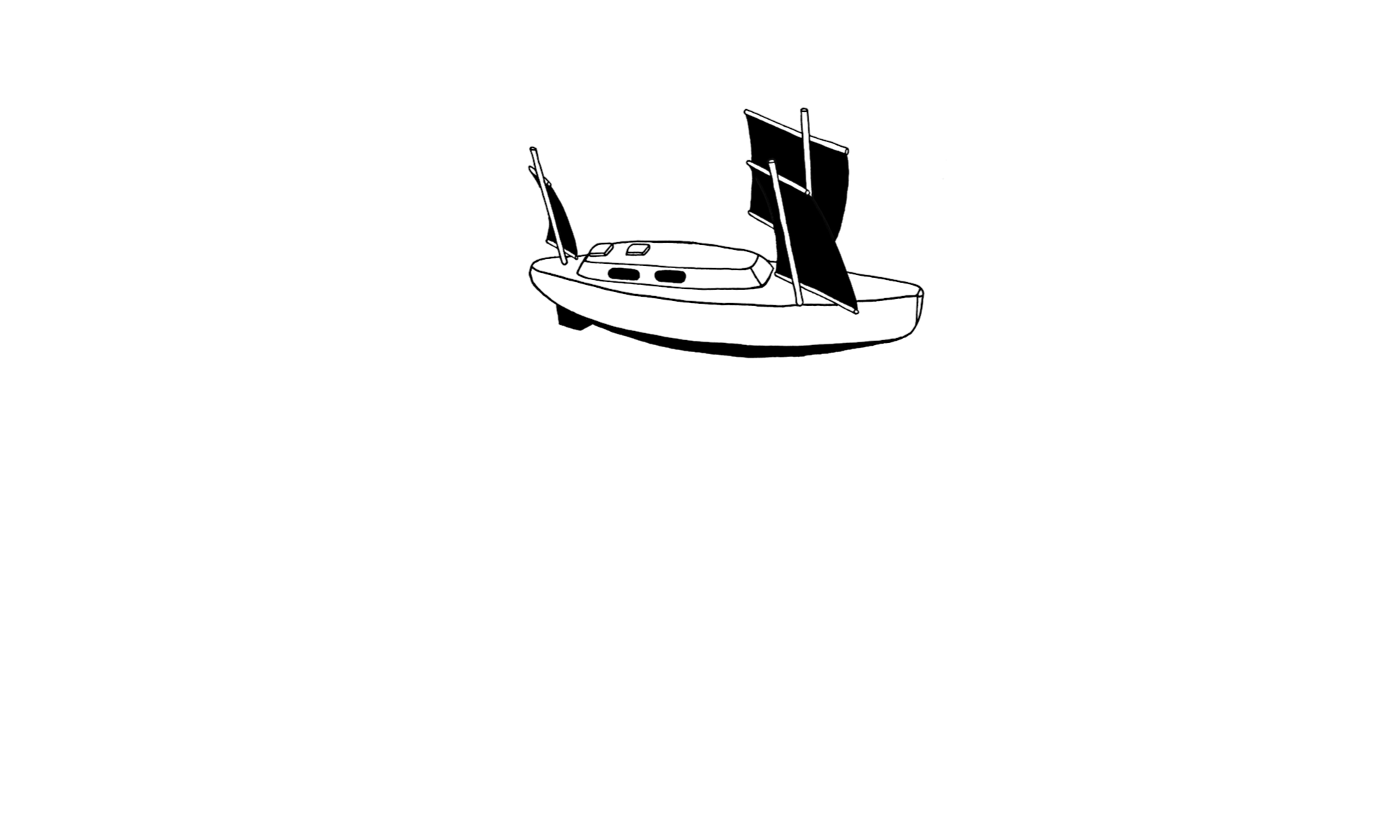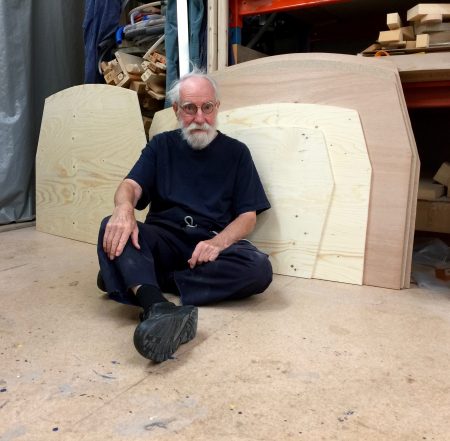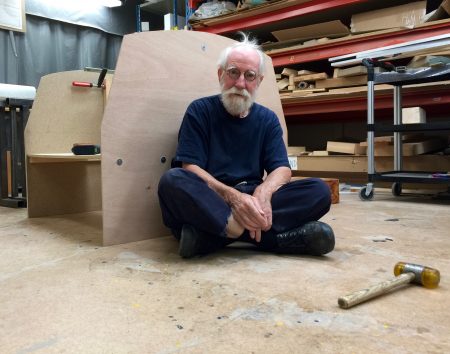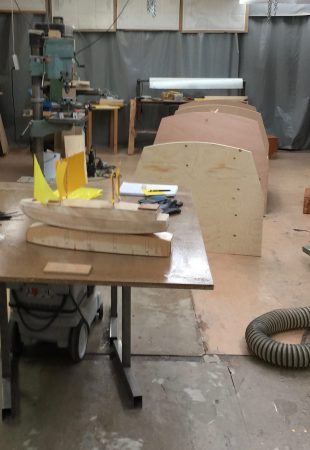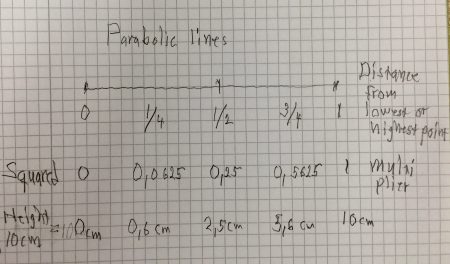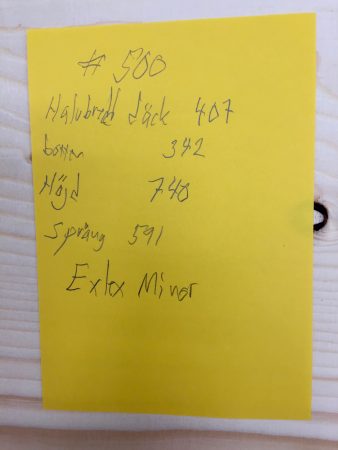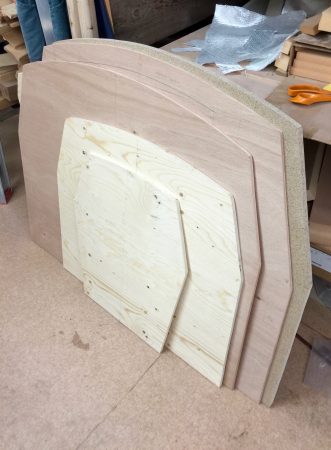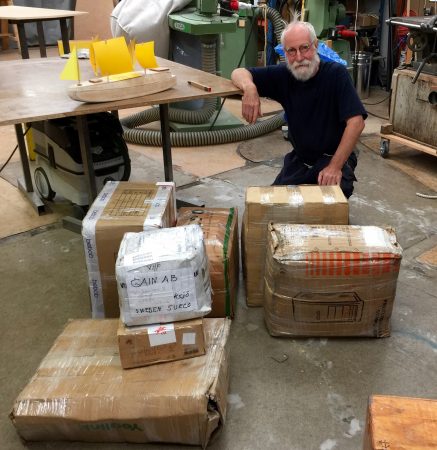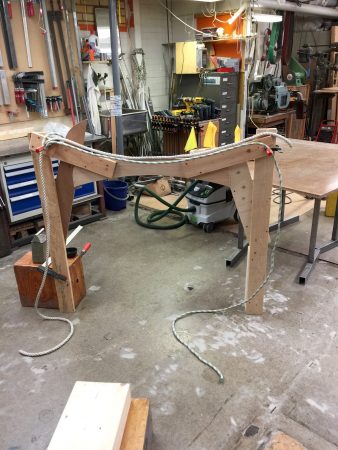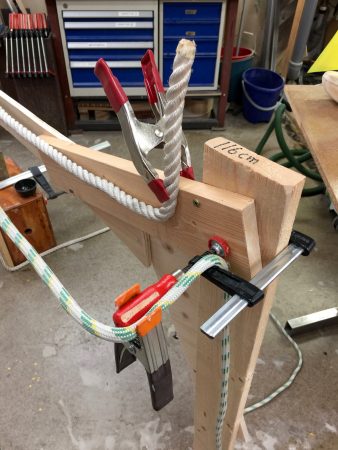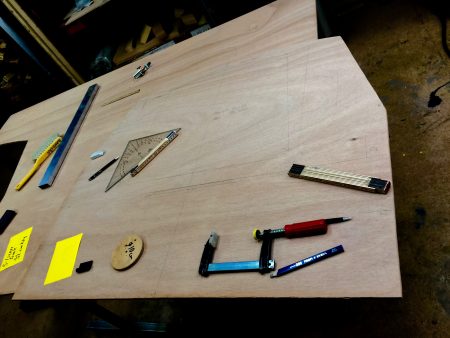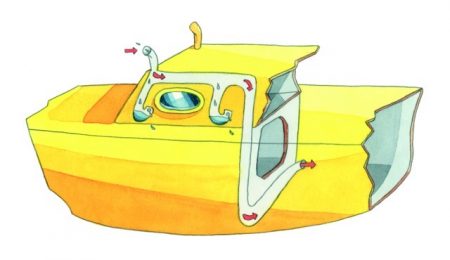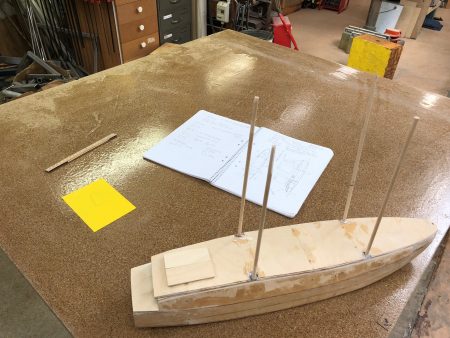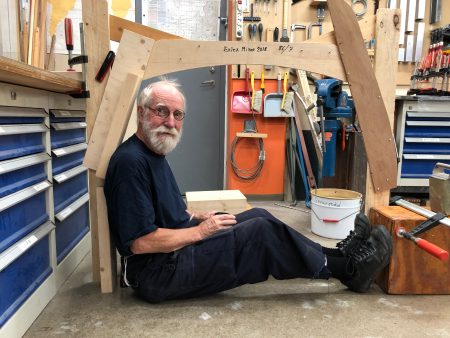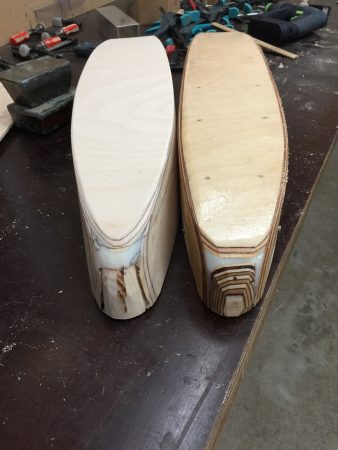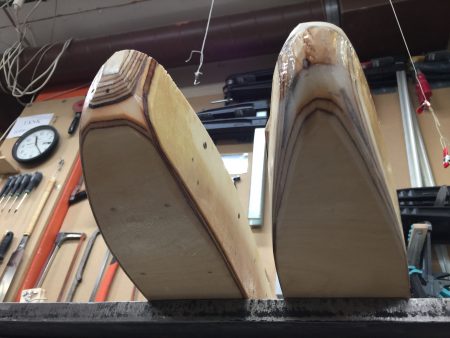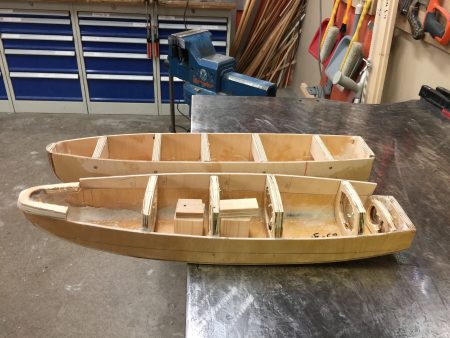Today I cut out the rest of the moulds and put two of them up to take the hull sides. For fun I also placed two more in an approximate position to get an 3 dimensional feeling of Exlex Minors size. She certainly is not a big boat, but thats the idea on the other hand she looks like she will be handy and easily handed.
Below a few pictures. First the frames and mould and me to give scale.
Below: One bulkhead and one mould fixed, parrallell and not twisted and in line, ready to take the hullsides.
Me, Yrvind and some bulkheads and moulds to give scale to Exlex Minor, she has 8 cm or about 3 inches more beam than Exlex. At this stage it is easy to suboptimise and give planty of beam, but give 8 cm to an contortionists doesent matter if she is a “frontbender” or “backbender” I guarantie she be out of her job in no time at all.
When I as a child told my late mother that 5 cm was not much she countered and said it was much on a nose. I think 8 cm extra beam will make a lot af difference on Exlex Minor. She will also be higher in proportion and the hatch in the main bulkhead will increase from 38X40 cm to about 60X60 that is the area will be more than twice as large. Anyway, its an experiment and the only way to find out is to try.
The setup from a distance. The modell in the foreground. The sight pleases me.
About parabolic lines, for those interested in elementary mathematics: The deck beam and sheer line and other such lines are are beutiful if they are parabolic. To find the points, for exampel on half a deck beam divide the distance into four equal parts, that gives five points. Square the distances as below and multiply by how much beam height that is desirebel. The height of any point can be found by taking the fraction to the whole and square the number. Same thing with sheerline, start with the lowest point and go forward and backwards.
To morrow we will here in Sweden have a cooler day after a summer long, killing heat wave. I have not been out running since I been back. The cramped conditions in Exlex have wasted away my leg muscles. To run in that condition whith so much heat I thought not advisible, but tomorrow is time to start.
Health is important. Therefore when I left Irland I started to eat, strictly, only one meal a day. The purpose is to limit insulin which is a poison had in big quantities. Diabetes is a bad disease, they say Alzheimer is diabetes type 3. Its no use having an fantastic boat if you are ill.
What is the value of health?
Ask an invalid person.
To be continued…
Regards Yrvind.
